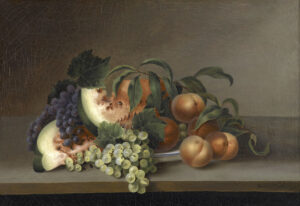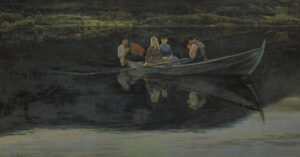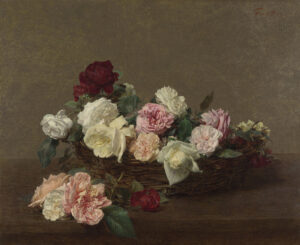Watermelon has been on my mind! We’ve gone through two watermelons in two weeks, and I can’t even begin to tell you how many peaches (most of them sliced up into small pitchers of Chianti to accompany dinner), plus mangoes and lychees and cherries, and the apricots have been wonderful this year, too. I tend to think there is nothing like summer fruit, but then of course autumn comes and so do the apples and the pomegranates, and then winter brings all the citrus and stuffed dates… and maybe I’m just a little in love with fruit, in general. I am my father’s son, after all. When I was a boy, I’d accompany Dad to the market, where he would buy summer fruits by the wooden crateful. This, I assumed, was how fruit was sold, and I thought everyone did this.
And so it’s July and we find ourselves firmly in the midst of all those summer fruits… and in the second half of the year. North of the 49th Parallel, it’s Canada Day today (la Fête du Canada), which, I imagine, will be celebrated with greater gusto and enthusiasm this year, for reasons I shan’t mention. The Dog Days of Summer will soon begin, too, once Sirius, the Dog Star, begins rising with the sun as it does each early July. They’ll be with us for about five weeks before the two stars go their separate ways again. And the Fourth, of course, brings our own national holiday here in the States, and there will be fireworks at the Lake Worth Lagoon.
Your Convivio Book of Day Calendar for July lists all the celebrations of the month. It’s a free printable PDF, as usual. CLICK HERE for yours. It’s the month, too, of Tanabata, the Japanese Star Festival, and of St. Swithin’s Day and several other saints’ days, too, and when we reach month’s end, already we will have a first inkling of fall, for the month ends with Lammas Eve. It is the night when Shakespeare’s Juliet was born, and it is heralds the day when, in our agricultural past, the first grain harvest would be brought in. Hence, a good day to bake a crusty loaf and to enjoy the first fruits of our labor.
This is summer. Enjoy its warmth and sweetness.
COME SEE US AT THE SHOP!
We’ve got Kim Spivey teaching a new session of Collagraph Printmaking on Sunday July 27. Kim’s a great teacher and this is a wonderful class… it’s the second time she’s teaching it for us this year. Come learn something new!
Image: Still Life with Watermelon by Rubens Peale. Oil on canvas, 1865 [Public domain] via Wikimedia Commons.




